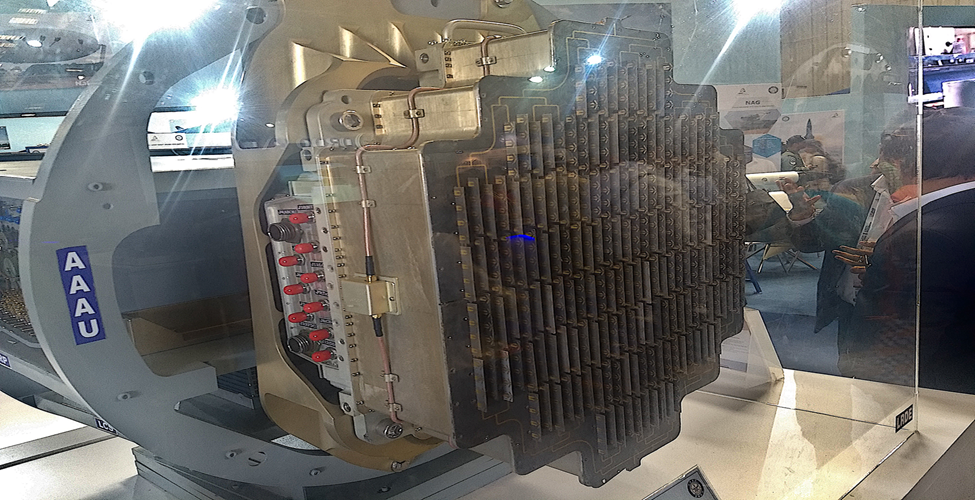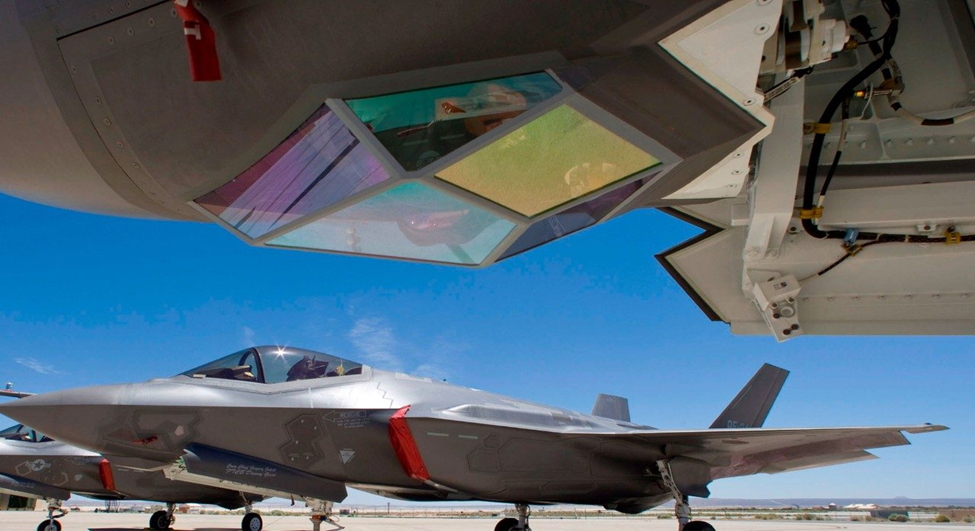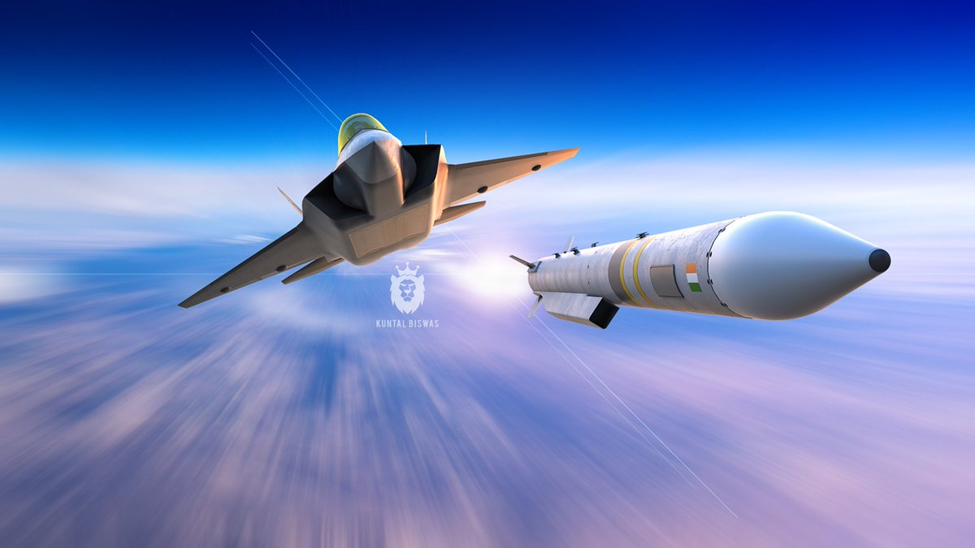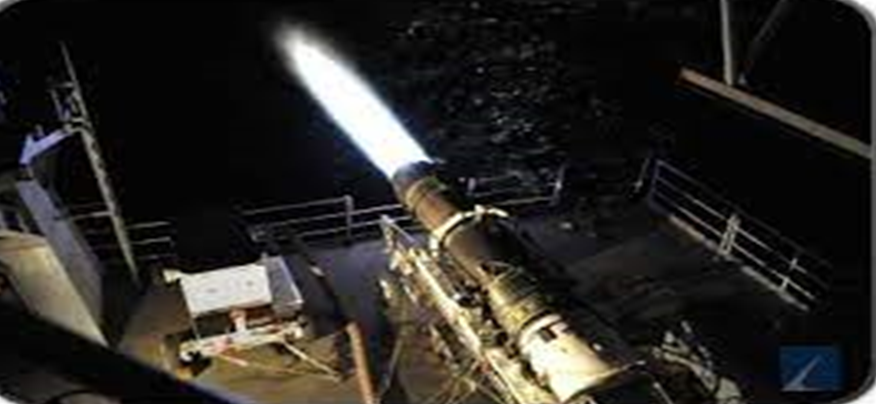There were several updates regarding the Advanced medium-weight combat aircraft (AMCA) in recent days, the most important of them being the commencement of manufacturing of 1st prototype of AMCA. The AMCA will be a futuristic 5th generation aircraft that would also incorporate some features of planned 6th generation aircraft all over the globe, the development of AMCA will take place in two phases, AMCA MK-1 and AMCA MK-2 which would majorly differ in the indigenous content and futuristic features. The AMCA is a long-awaited program, tracing its roots to the failure of the FGFA program with Russia, today its most likely going to constitute the future backbone of the Indian Air Force (IAF).

Importance Of Fifth Generation Aircraft
It has been observed that there has been a very sudden rush by government and armed forces towards AMCA in recent times, which indicates India has finally understood the importance of a next-generation aircraft and found a real practical way to compete in technological aspects, especially with China. The fifth-generation aircraft is currently posed by only a handful of nations; these include the USA with F-22 Raptor and F-35 Lightning, China with J-20 and FC-31, Russia with Su-57, while other countries like India, South Korea, Japan, and Turkey are also in the race to join this elite group of nations. The fifth-generation aircraft is more focused on stealth, Electonic warfare, and futuristic pilot-AI interface than the convectional 4th generation aircraft. The stealthiness of these aircraft gives them an edge over the majority of current 4th generation aircraft, it enables them to be invisible to enemy’s systems in BVR combat, enables them to perform SEAD using their advanced electronic sensors, further the scope of upgrade is also usually way higher in the 5th generation aircraft due to suffice electrical power they are capable of generating which in turn is capable of operating high power avionic of future.
The first fifth-generation aircraft came from the US, which was the F-22 raptor which was especially initially made to counter super-maneuverable Soviet threats, following this was the F-35 lighting that became the first single-engine 5th generation aircraft, but then to everyone’s surprise came Chinese J-20 that was powered by convectional engines of 4th generation aircraft that was a major breakthrough (we will discuss it later), it made China be the first Asian nation (even before Russia) to develop a next-generation aircraft. China’s success of next-generation aircraft posed a significant threat to India, although there had been several reports that contradicted the possibility of J-20 being a pure stealth aircraft, one such statement was given by former ACM BS Dhanoa where he said “The Su-30MKI’s radar can pick J-20 from many kilometers away”, but it has to be accepted that China over time has heavily modified J-20 and has even developed a whole separate 5th generation aircraft FC-31 that is intended to be used for Naval operations. India on the other hand initially tried to develop next-generation aircraft with Russia under FGFA, however, the program just led to the loss of capital, time, and failed negotiations, it was here when a country like India that had just developed a fourth-generation aircraft then decided to develop an advanced fifth-generation aircraft indigenously.
What makes India’s fifth-generation aircraft different?
The AMCA is going to be the world’s first 5.5th generation aircraft, which means that it will be expected to have better features than the current operational fifth-generation aircraft. The project director of AMCA one said that the aircraft is completely designed as per requirements of the Indian Air Force and unlike other 5th generation aircraft some of them being better in stealth lack cost efficiency and maneuverability or those who are better in maneuverability lack stealth, the AMCA is perfectly designed in a way that it doesn’t compensate on any feature.
The AMCA MK-2 is further planned with more impressive features like Directed energy weapons and Thrust vectored engines with serrated nose pattern, there were also some indications by high-level authorities of India giving way to AMCA MK-2 or some other aircraft that is largely based on it to be a 6th generation aircraft in future. The confidence with which DPSUs are developing this aircraft has also to be remarked, just as an example India denied its participation in the UK’s 6th generation Tempest program where it was given the role of being a software developer of such aircraft.
The Indian AMCA will be a really strong response to China’s J-20, it has to be accepted that 36 Rafales are not enough for the pace that China has decided for its aviation industry, further despite being the most advanced aircraft in its category, the generation gap between Chengdu J-20 and Dassault Rafale will definitely provide a benefit to Chinese counterpart, therefore the only possible alternative can be an indigenous combat aircraft that has technological edge and is feasible to operate. The AMCA can further attract many international nations due to its feasibility as a 5th generation aircraft.
What are such technologies in AMCA?

Radar and Situational awareness– The AMCA is expected to use a modified version of Uttam radar with more Transmitting and receiving modules, the special thing here would be that this radar would be based on Gallium nitrate-based semiconductor. The X band Gallium Nitride radar being used in AMCA will allow it to handle more peak power result can generate stronger electromagnetic signals which can identify objects at a much greater distance, further the Gallium nitrate-based radar has a lower signal to noise ratio and higher gain, which would allow the aircraft to detect even the weakest of reflected signals from enemy aircraft, the reason why such radar was called a “Stealth killer”. The radar disc would be mounted on a mechanically steered drive to increase the scanning area in azimuth and elevation. A former test pilot has also given clues regarding the offensive jamming capabilities of Uttam Radar in Tejas MK-1A, if true, the AMCA’s really going to feature an amplified version of the jamming capabilities that would cover many military grades frequencies. The most important sensor for AMCA is going to be the Electro-optical targeting system (EOTS), till date, only US’s F-35 has such a sensor, the reason for that being the complexity of this sensor and the level of advancement needed to develop such a sensor. The EOTS increases the situational awareness of aircraft by multiple folds; it’s a combination of several sensors like Thermal Imager, CCD Camera, Eye-safe Laser Range Finder, Laser Illuminators, and Beam Generator. The EOTS helps the aircraft to track and detect the enemy without using radar (known as passive tracking), this is somewhat similar to Infrared Search and track-mounted on aircraft like Dassault Rafale and Su-30 MKIs, however, EOTS due to a mix of several sensors can perform various functions like tracking and detection of enemy aircraft, guiding air to ground munitions like Laser-guided bombs, surveillance, and reconnaissance. Passive tracking helps the aircraft to detect the enemy without using radar, the radar of an aircraft emits electromagnetic radiation for detecting an object which in turn can reveal the position of the aircraft, further the radar of the aircraft can also be jammed and let the enemy be aware of the presence of some other aircraft in the region, however, passive sensors allow the aircraft to detect and track enemy without using electromagnetic radiation, that in turn doesn’t even let the enemy be aware of the fact that it is being tracked or detected. The EOTS of AMCA will be complemented with other sensors to provide 360-degree coverage around aircraft, forming something similar to EOTS-Distributed Aperture System. The sensor would be developed by the IDRE lab under DRDO, the official confirmation regarding EOTS is still yet to be given but for sure AMCA will have this sensor either initially or after some production units.

Stealth– The AMCA will feature a structurally stealthy design with extensive use of composite, radar-absorbent material, and infrared paint. The Radar absorbent material absorbs the electromagnetic wave falling towards aircraft and prevents its reflection back to the radar, which in turn doesn’t allow the aircraft to be detected or tracked easily. The infrared paint helps to reduce the thermal emission from aircraft, making it difficult for IR-guided missiles to lock on aircraft. The aircraft structure also has an S-shaped intake, somewhat similar to that in Dassault Rafale, the S-shape intake prevents the direct exposure of the aircraft engine blade to electromagnetic waves of radar that makes it difficult for any radar to detect the aircraft as most of the reflection of these radar waves are made from the engine of the aircraft. The internal weapon bay and exhaust of aircraft also have a serrated pattern again to reduce the chances of detection by deviating the electromagnetic waves in such a way that they don’t directly bounce back to the emitting source.

Weapon Package – The AMCA will have two modes one will be stealthy where all the weapons would be carried in an internal weapon bay located in the middle fuselage of the aircraft or the non-stealthy mode of the weapons would be able to be externally loaded in 14 hardpoints. The AMCA would be able to fit 4 Beyond visual range missiles in its internal carriage or a combination of BVR missiles and ground munitions according to mission profile. The internal carriage of weapons is a distinct feature of 5th generation aircraft, it allows to maintain the stealthiness of aircraft by doesn’t let the electromagnetic waves of radar be bounced back from the external weapon load that the aircraft used to carry, this is a major drawback of 4th generation aircraft too, as aircraft like Dassault Rafale has almost achieved everything a 5th generation aircraft can do varying from comparatively stealthy structure to advanced electronic warfare and avionics that indeed provide them advantage, but the moment these aircraft are loaded with external weapons their RCS shot up hence making them relatively more vulnerable to enemy’s radar. The AMCA can be further loaded with external payload too in cases where the mission supports more weapons over stealth, this is usually done to provide cover to other aircraft. The weapon pack would be complete indigenous varying from Astra series of missiles for air to air role to BrahMos NG, Rudram series of missiles, DRDO SAAW, and other laser-guided bombs that would be eventually clear after some time for the air to ground and SEAD (Suppression of enemy air defense) mission. The weapon that is really going to be deadly is under development SFDR based Astra MK-3 with a maximum range of 350kms (highest in the world) from high altitude and an expected no escape zone of 150+ km, even a combination of such 4 missiles in the internal carriage would be fatal for the enemy. The weapons like BrahMos-NG and Rudram-1/2/3 would really make a deep strike into enemy territory a cakewalk for aircraft. The AMCA is further expected to be loaded with directed energy weapons and upcoming futuristic weapons of the future in the AMCA MK-2 variant.

Propulsion– The most significant difference between AMCA MK-1 and AMCA MK-2 is going to be of the engine used in the aircraft. The AMCA MK-1 will be powered by a 2X GE-F414 INS6 variant with better fuel efficiency, a higher thrust of around 100+kN per engine, and a full authority digital engine control system. The engine regarding AMCA MK-2 is often under debates, India has decided to develop the engine of AMCA MK-2 as a 110+Kn class engine under a joint venture with either British Rolls-Royce or French Saffran, although it was expected that the joint venture would be between DRDO and Rolls-Royce due to their previous experience in production of high power engines like EJ-200 which powers Eurofighter-typhoon, in fact it’s a less known thing that even for Tejas MK-2 the Rolls-Royce presented their EJ-200 engine with thrust vectoring control, better thrust and more fuel efficiency but was defeated by bid presented by General electric, furthermore UK also require an engine for their 6th generation aircraft program and AMCA MK-2 would also be a similar class of aircraft so there existed very high chances for a co-development of engine between both UK and India so to fulfill requirements of both nation, Until a month ago where reports claimed that India and France would be developing a 125+Kn class advanced engine as here also France requires a next generation power plant for their FCAS combat aircraft, strategically partnership with France has been an old one ;still the expectations of this joint venture were less because till date the most powerful engine that France has developed is of Mirage-2000’s Saffran M-53 with max thrust of around 90+Kn, so a leap to directly 110+Kn class of engines would be a thing to look upon. The co-developer for AMCA MK-2’s power plant is yet to be finalized, but looking at growing geopolitical situations and technological factors, there exist very high chances of a DRDO-Saffran Joint venture in the future. But again, the recent visit of UK Prime minister Borris Johnson and his statement on developing combat aircraft with India can again mean a different propulsion system on AMCA MK-2.

At moment there’s a lot of excitement among the whole aviation community for AMCA in India, many things like electronic warfare tech to be used in AMCA would sooner or later become clearer with the passage of time. Although at least enough can be said that the AMCA project is on the timeline, if not can be ahead of it, may AMCA touch the sky with glory soon. It further has to be understood that with time there is the possibility of even greater changes that would be only revealed once the aircraft is finally prepared, so there exists a scope of incorporation of such technologies that may not be even mentioned in this article currently.
About the Author: Pratisht Chaudhry (Twitter @Pratisht3) is a military observer with a special interest in aviation. The views expressed are the author’s own.
Header Image Credit: defenceaviationpost.com

